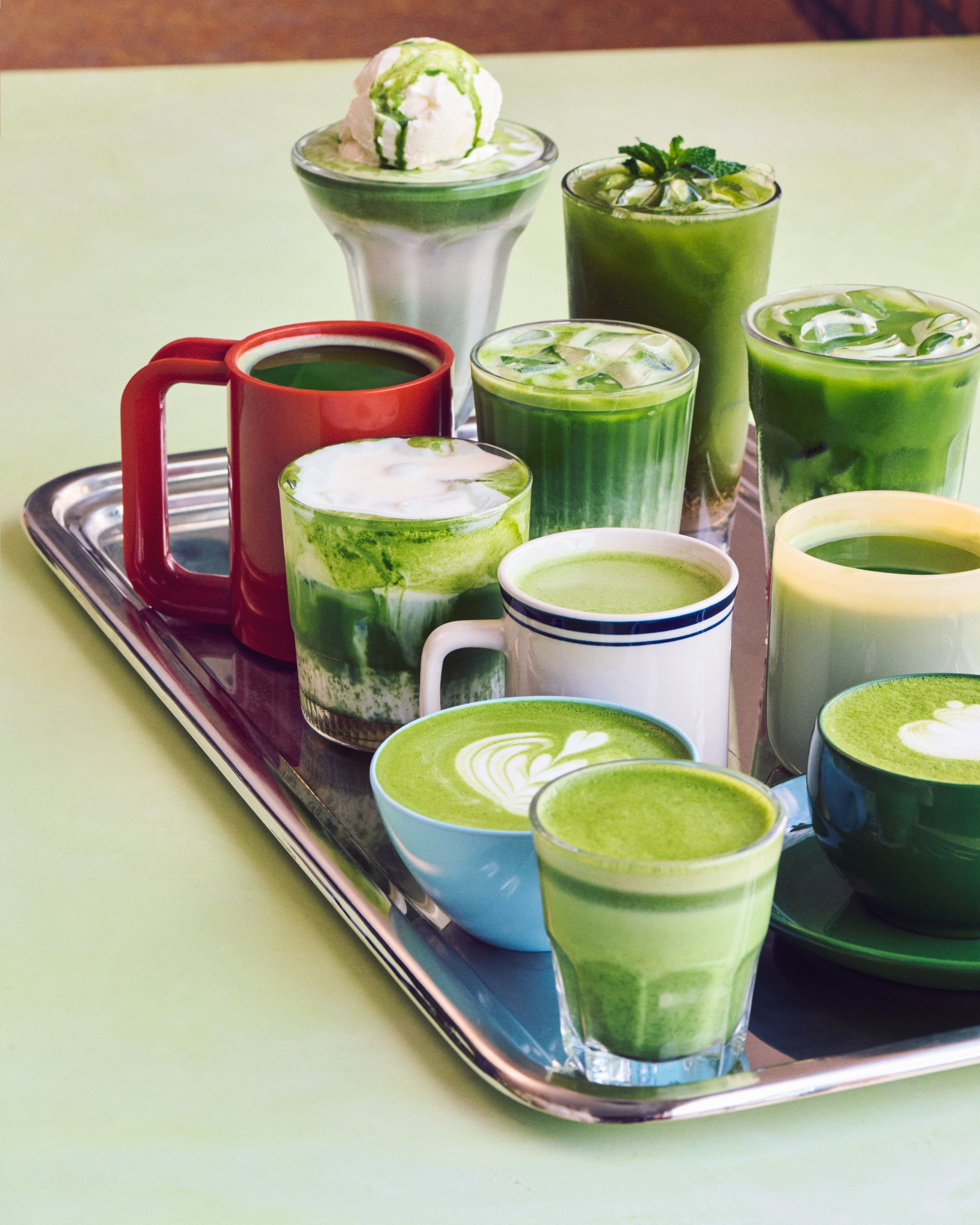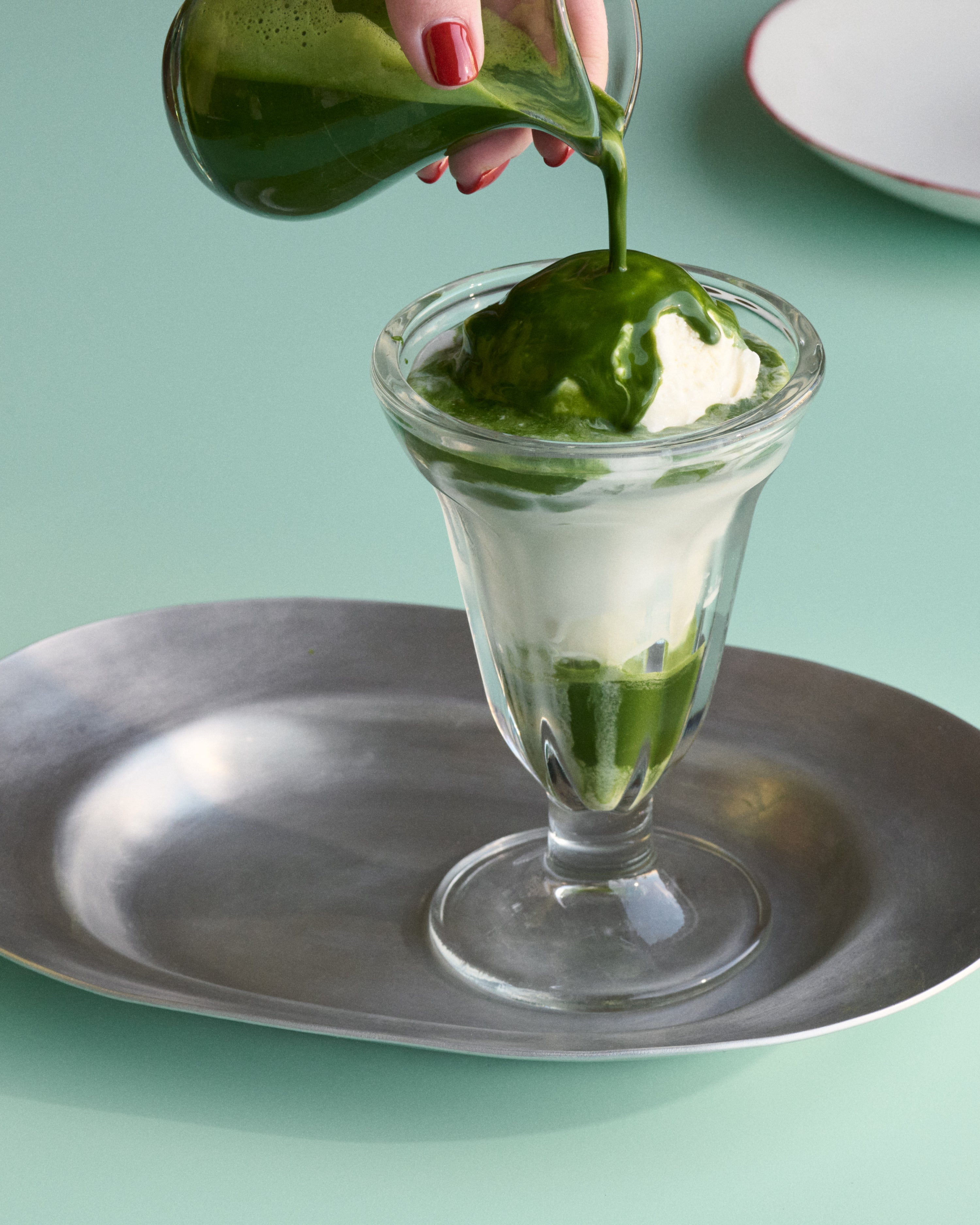How To Make Matcha
Sen no Rikyu, Japan’s most famous tea master, once said:
“Tea is nought but this: First you heat the water, then you make the tea. Then you drink it properly. That is all you need to know.”
Tea can be that simple, but we’d love to share a few tips to help you draw the best flavor out of your matcha.
How to Make
Pure Matcha
If you’re enjoying matcha on its own, without milk or sweetener, here’s our recommended method.
Use the best water you can. Spring water is ideal, good filtered water works well, but we suggest avoiding distilled (flat-tasting) or straight tap water.
Matcha can be made with just-off-boiling water and historically has been made this way, but we prefer a gentler temperature for a smoother, more nuanced flavor. Approximately 175ºF is ideal, so grab a thermometer or use a variable-temperature electric kettle.
A traditional matcha bowl is great, but any small bowl or wide cup will do. You just need enough space to whisk without too much excess room in the vessel.
Pro tip: Warm your bowl with hot water before adding your matcha, but be sure to discard the water you used to heat the bowl.
Use 2 grams of matcha for one serving. A bamboo scoop is traditional, but a level teaspoon measures almost exactly 2 grams.
Always sift your matcha before whisking – it prevents clumps and makes for a smoother drink.
A bamboo whisk is best – it’s been used for centuries for a reason! Add 2 fluid ounces of water, stir gently to dissolve any lumps, then whisk briskly in a zig-zag “W” motion to aerate and create foam. Metal whisks do not work well for this.
The amount of foam is up to you! Contrary to popular belief, thick champagne-like foam is not always the desired outcome. In Japan, this actually depends on the tea school you adhere to, with some schools aiming for medium to very little foam. However, the most popular technique is the thick-foam style, which is how we prefer to drink pure matcha.
If you’re using an electric whisk, ensure your bowl or cup isn’t too short to prevent overflow. Sifting is still necessary to prevent clumps.
Drink as-is (directly from the bowl is traditional), or add more water to adjust the strength to your liking. We enjoy adding water for a total of about 6 fluid ounces of tea – but the total is your choice!
If you pour into another cup, warm it first so the tea stays hot, or fill a glass with ice, pour the matcha over it, and fill the remainder with cold water for a pure iced matcha.
This method makes what’s called “thin tea” – the most common way to enjoy matcha. “Thick tea” uses twice the matcha and half the water, producing a texture closer to pancake batter. It’s usually reserved for very high-grade matcha, like those in our Rare collection.
Of course, there’s no single “right” way to make matcha. This is simply our recommendation, shaped through our Western lens, and by years of making and enjoying matcha, while staying mindful of tradition.
How to Make a
Matcha Latte
The matcha latte is the most popular way to enjoy matcha in America, and we can see why – it’s endlessly customizable. Here’s our recommended method for making delicious matcha lattes at home.
Good water makes good tea! Always use spring or filtered water if possible.
- For hot lattes, we recommend heating to about 175ºF, just like with pure matcha.
- For iced lattes, use cold or room temperature water.
We like to use a little more matcha in milk-based drinks, around 3 or 4 grams (1.5 to 2 teaspoons). Sifting is still key, as it helps prevent clumps when whisking and ensures your latte is silky smooth.
Add 2 fluid ounces of water (hot for hot lattes, cold or room temperature for iced) to your sifted matcha.
Whisk with a bamboo whisk or an electric whisk until the matcha is dissolved. Unlike pure matcha, thick foam here isn’t necessary, especially for iced lattes; a light foam will do.
If using an electric whisk, you can whisk directly in the mug or glass you’ll be drinking from.
- For hot lattes, heat and froth 6–8 fluid ounces of milk (dairy or non-dairy). You can steam it on an espresso machine, or heat it on the stove and froth it with a handheld frother, just be sure not to over froth, a little bit is enough.
- For iced lattes, add ice to a tall glass, then 4-6 fluid ounces of milk (dairy or non-dairy).
- For hot lattes, pour your whisked matcha into your favorite mug, then gently add the frothed milk.
- For iced lattes, pour the whisked matcha over the milk and ice.
The matcha latte is a wonderful way to enjoy matcha whether you’re just getting into matcha, experimenting with new flavors, or simply prefer your matcha creamy. Feel free even to sweeten your beverage a touch if you’d like. Far be it from us to tell you how to enjoy your tea!


